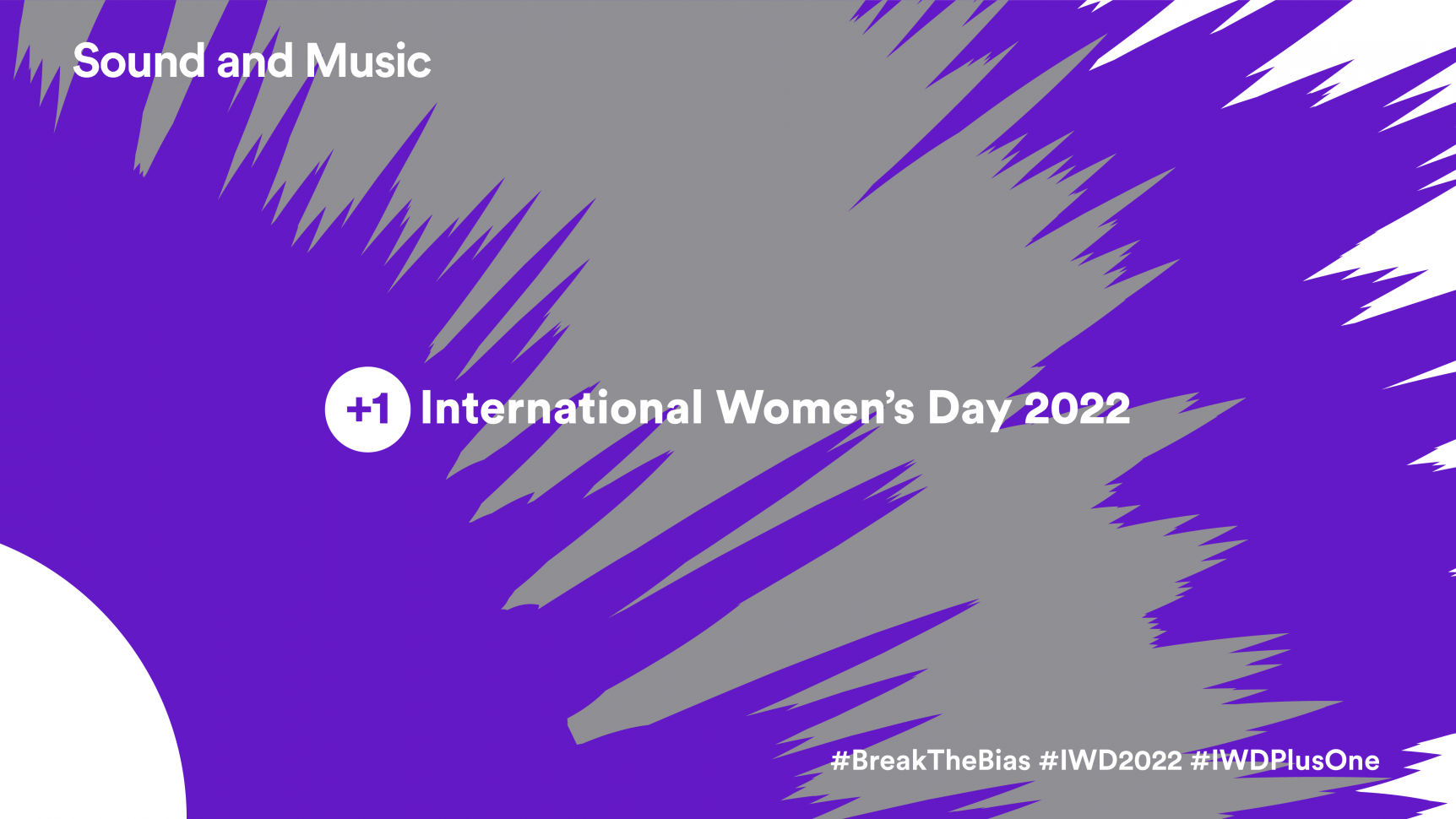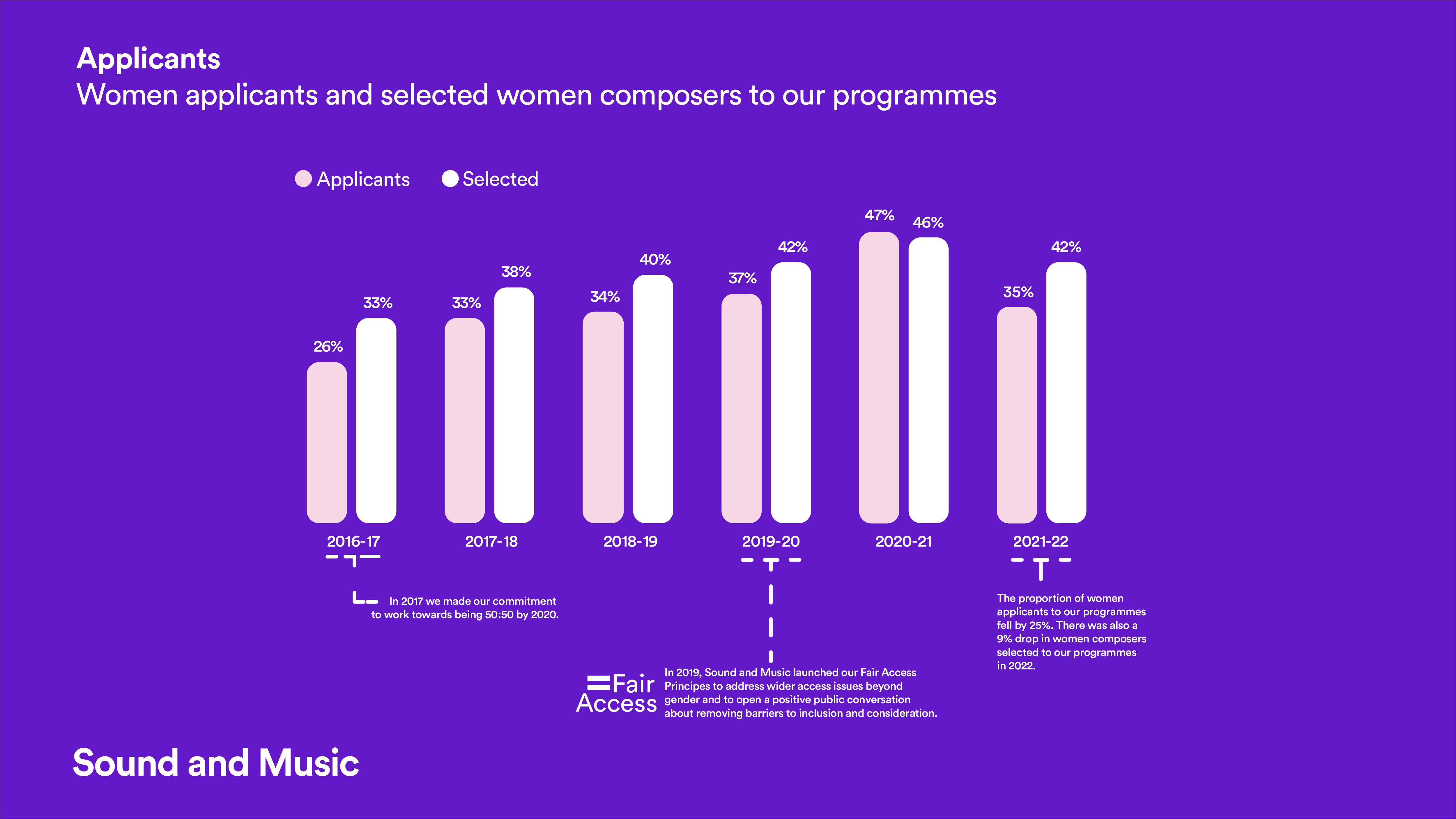This is the fifth consecutive year that we have published our data relating to the proportion of women applying to and selected for our programmes.
In 2021-22 we saw a huge increase in applications overall, including almost three times as many women applying to our programmes as the previous year (an increase of 193% since 2020-21). However, the proportion of applications from women overall has dropped to 35% (a decrease of 25% on last year). Our selection processes improved this rate of representation to 42% women but this is still a decline of 9% on last year.
You can read the full infographic here
Acknowledging this reversal after the otherwise positive progress of the last few years is our first step towards better understanding why it might have happened. It is also a spur for continued improvement in the coming years.
In understanding why this drop has come about, we need to reflect first on what has changed in our approach to data collection during this period.
Firstly, we have collected significantly more data – both through including more of our programmes in this review, and because during the pandemic we proactively created many more opportunities for composers and artists (and we received a far higher volume of applications than ever before). To translate these words into numbers: in 2021-22 we received 955 applications, and in 2020-21 we received 303.* (*between IWD 21 and IWD 22 and not the entire financial year).
We also fulfilled our 2020-21 commitment to expand the data we collect to include options for those who identify as non-binary and minority genders. We apologise that this did not happen earlier. Last year, before making this change, over 20% of respondents chose not to provide their gender details or answer the question about how they identify. This year, only 5% of applicants preferred not to provide their gender.
These are some of the changes that we know about (because they are in our control). But of course there are huge and ongoing changes in wider society that may well sit behind what we are seeing.
One of the impacts of the pandemic has been to increase the inequality of opportunities that already existed, but we don’t yet know if this was something that affected women specifically. Similarly, many times over the years we have been told that girls and women are less likely to put themselves forward for opportunities (due, amongst other things, to lack of confidence); perhaps this was even more the case during a pandemic that took such a toll on the nation’s mental health.
Clearly what needs to happen is a *deeper and more structural look at the barriers that have led to the increasing lack of representation that we see and to understand if this is an effect of an unprecedented period or a longer term reversal of the progress we and others have made (*if you would like to share your experience with us or have something to say about these findings please send us your thoughts via this form).
Taking an intersectional approach is essential and will, as we know, lead to some of our data shifting and changing, mirroring applicants themselves who are people not just numbers. Every person’s circumstance is different and changeable, including being affected by the demographics, culture and provision of opportunities where they live.
Once again, I cannot stress strongly enough how important it is for us, and other organisations, to collect, analyse and publish such data. Our award-winning approach to this has propelled us forward as an organisation seeking to make positive change for the composers, artists and young people creating new music and sound today, and ultimately for the audiences and communities who deserve to hear a wide range of new music and to see themselves reflected in the people who create it. Only through transparency, honest reflection and open conversations can barriers be understood and progress made.



